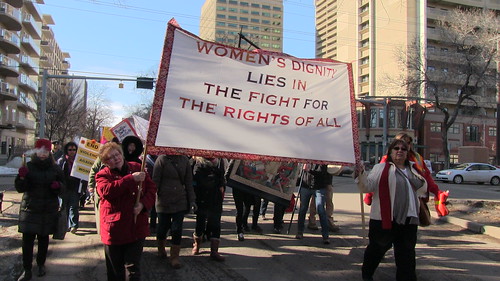Thoughts and musings from a writer, editor, photographer, activist, and musician in Edmonton, Alberta, Canada. I believe that faith and social action are intertwined in efforts to positively motivate change in the society around us. We need to be actively involved in our communities to try to effect this change locally and globally. I also love the local Arts scene. Warning: alternative perspectives and strong opinions ahead. Intimidated yet? Good - read on.
Tuesday, March 19, 2013
How To Change Our Rape Culture
Sunday, March 03, 2013
Re-Victimizing Victims
A major news story in Edmonton last week involved a young Aboriginal woman who called the police to report an assault. The EPS who arrived at the motel room decided to act upon an old warrant and arrest her. According to the youth court worker who visited her in custody, the signs of her assault were visible. As well, he attests that the violations for which she was being held should not have resulted in jail time (read his blog post on the matter here.)
It was this youth court worker who broke the story on Twitter. His series of tweets resulted in much discussion and outrage, and yet the mainstream media ignored it. APTN did, however, and the rest of the media followed suit shortly thereafter.
Regardless of how the actions of the EPS are explained or justified, what happened is a major public relations faux pas on a number of levels. First of all, the subject in question is a young Aboriginal woman. This incident furthers a public perception that there are two levels of justice: one for Aboriginals, and one for everyone else. One need to only recall the incidents concerning Randy Frying Pan and the "sweatbox" case.
Secondly, what happened last week is an example of how a victim tries to access services, only to be re-victimized by those who should be helping her. Having a criminal record or a warrant should not be a barrier to access. I shudder to think that there are potentially those who are afraid to get help because they might get in trouble.
Re-victimizing victims is nothing new. Think of the sexual assault survivor who no one believes. The bullied child who is told she is just being overly-sensitive. The abused spouse who finds no community or social support in leaving the situation.
Policing is a difficult job which often involves making decisions on one's feet. I have known situations where the police have been wonderful and truly helpful. However, in this case, their actions and the resulting ripple effect is damaging and dangerous.



